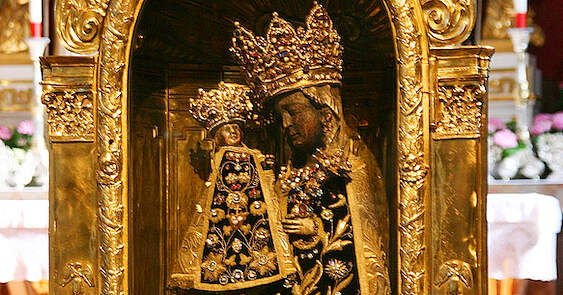
On November 18, 1980, Pope John Paul II visited the most famous and oldest Marian shrine in Southern Germany: Our Lady of Altötting in Bavaria, near the Austrian border, which dates back to the Carolingian era, at the time of the holy bishop Rupert.
During the pilgrimage season, the candlelight procession ends in front of the Gnadenkapelle with the invocation: "Help me Mary, help me Mary! Help me also! I stand before you, a sinner! O Mother of Mercy, stay close to me on the day of my last agony!" Even more moving is the absolutely unique custom of carrying a wooden cross on one's shoulders and walking around the chapel three times, praying and imploring the Mother of Sorrows to obtain forgiveness of one' s sins.
Several famous people upon their death had their hearts placed in an urn or buried under the floor of the holy chapel: the hearts of the reigning dukes and kings of the Wittelsbach family (the family of the famous Empress Sissi) as well as the remains of the devout Commander Tilly. Maximilian I (d. 1651), Elector of Bavaria, had a prayer written in his own blood placed under the statue.
It is said that during the Second World War, the Nazi SS troops, seeing the American army coming, entrenched themselves in the convent of Alttöting after killing the abbot. The Americans warned that they would bomb the place if the electric light was not turned on; the Nazis refused, but a brave pilgrim managed to turn on the light, paying with his life for this courageous act while saving the shrine from destruction.
The Mary of Nazareth editorial staff
Source: Marian Encyclopedia